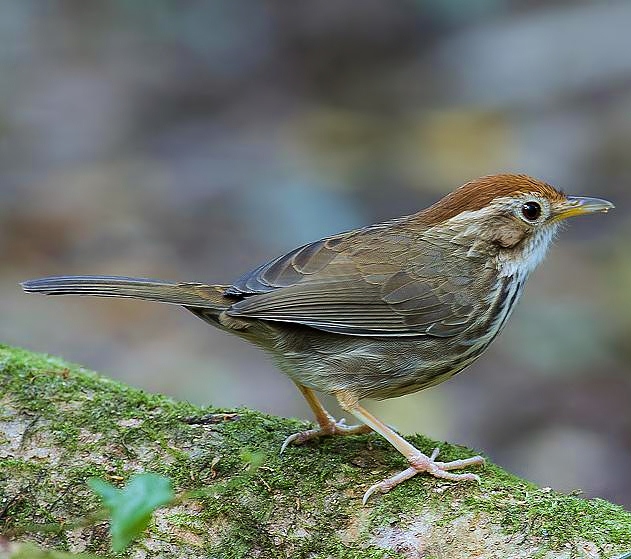 |
| Photo by P. Supat (Internet Bird Collection) |
Common name:
puff-throated babbler (en); zaragateiro-de-peito-estriado (pt); akalat à poitrine tachetée (fr); tordina pechiestriada (es); streifenbrust-erdtimalie (de)
Taxonomy:
Order Passeriformes
Family Timaliidae
Range:
This species is found in southern Asia, in southern India, in northern India, Nepal and Bhutan, and Myanmar and southern China into Vietnam, Thailand and Malaysia.
Size:
These birds are 15 cm long.
Habitat:
The puff-throated babbler is found in scrublands, bamboo thickets, tropical moist forests and plantations.
Diet:
They mainly forage on the undergrowth and the forest floor, taking various insects and other invertebrates.
Breeding:
Puff-throated babblers breed in March-August, mainly during the local rainy season. The nest is a dome of leaves and twigs with an entrance on the side, usually placed at the base of a scrub with the entrance pointing downwards when in sloppy ground. There the female lays 2-5 pale greenish or yellowish eggs with reddish brown and grey speckles or spots. There is no information regarding the length of the incubation period, but the chicks fledge 12-13 days after hatching.
Conservation:
IUCN status – LC (Least Concern)
This species has a very large breeding range and is described as generally common. The population is suspected to be stable in the absence of evidence for any current declines or substantial threats.







